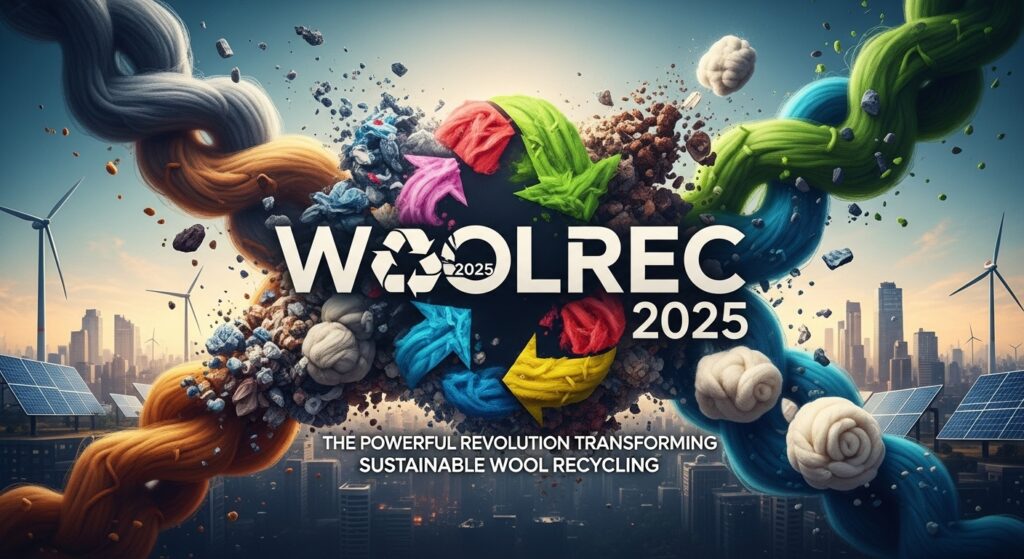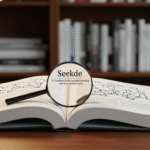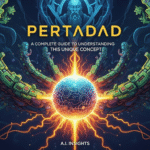In a world grappling with waste, resource scarcity, and environmental degradation, innovations that close the loop on materials are more important than ever. One such innovation gaining traction is Woolrec — a concept, process, and movement centered around recycling wool fibers, recovering value from textile waste, and reintroducing wool into new products. Woolrec promises not only to reduce landfill burdens but also to preserve the qualities that make wool such a treasured natural fiber: warmth, durability, breathability, and biodegradability.
This article explores what Woolrec is, how it works, where it’s applied, its benefits and challenges, perspectives for its future, and what consumers, brands, and policymakers can do to support its growth.
What Is Woolrec?
At its heart, Woolrec is short for “wool recycling” (or wool recovery) — a systematic approach to collecting, processing, and reusing wool fibers from garments, offcuts, and waste streams. Unlike discarding or downcycling wool, Woolrec aims to retain as much of the fiber’s value as possible, producing materials that can replace or complement virgin wool in new textiles.
In many descriptions, Woolrec denotes both the process (the series of technical steps) and the initiative or brand that implements those steps in real-world contexts.
Importantly, Woolrec is not limited to one single technology or method — rather, it may involve mechanical, chemical, or hybrid processes, depending on context, fiber condition, contamination, and desired output quality.
Why Woolrec Matters in Today’s Textile Landscape
1. Alleviating Textile Waste
The global textile and fashion industry produces enormous amounts of waste: post-consumer garments, production scraps, and unused inventory. Wool, while natural and biodegradable, often ends up in landfills because it’s mixed in blends or lacks infrastructure for recovery. Woolrec counters this by diverting wool from waste streams and giving it a second life.
2. Reducing Demand for Virgin Wool
Producing new wool entails resource costs: feeding and raising sheep, land use, water consumption, energy for processing, and transport. By reusing existing fibers, Woolrec lowers the pressure on these inputs and lessens the environmental footprint of wool-based production.
3. Enabling a Circular Economy
Woolrec embodies circular economy principles: keep products and materials in use, regenerate natural systems, and design waste out of the system. Wool fibers can loop through multiple life cycles rather than follow a linear “make-use-dispose” path.
4. Meeting Consumer and Regulatory Demand
As consumers become more eco-conscious, they demand transparency, sustainability, and accountability. Brands using Woolrec or recycled wool can differentiate through eco credentials. At the same time, regulatory pressure in many regions is pushing for waste reduction, textile recycling mandates, and circular reporting.
5. Economic Opportunities
Woolrec can help reduce raw material costs, create new value chains for waste wool, stimulate jobs in recycling, and open new sustainable product lines.
How the Woolrec Process Works
While variations exist, typical Woolrec workflows follow several core steps:
Collection & Aggregation
Wool waste is sourced from multiple channels: used clothing, textile donors, production offcuts, and discarded home goods. Efficient logistics and collection networks are essential.
Sorting & Preprocessing
Once collected, wool is sorted by color, quality, fiber type, and level of contamination (synthetic blends, metals, buttons, etc.). This sorting is crucial for downstream processing.
Cleaning & Decontamination
The fibers are washed, scoured, and decontaminated to remove dirt, oils, dyes, and foreign matter. Eco-friendly detergents or solvents may be used to minimize environmental harm.
Fiber Recovery (Mechanical / Chemical)
-
Mechanical processing: fibers are shredded, carded, and blended. Shorter fibers or previously damaged fibers may be mixed with virgin or longer fibers to maintain performance.
-
Chemical / solvent-based recycling: (less common in wool than in synthetics) uses chemical treatments to dissolve and regenerate wool at the molecular level, aiming for purer fibers.
Spinning & Yarn Formation
Recovered fibers are spun into yarn. Depending on the composition, they may be blended with virgin wool or other fibers to enhance strength, elasticity, or texture.
Fabric / Product Manufacture
The yarns are then woven or knitted into fabrics and used for garments, home textiles, insulation, acoustic panels, or industrial applications.
Finishing & Quality Control
Final finishing—dyeing, treatments, quality checking—is performed to ensure that the recycled wool meets performance, aesthetic, and safety standards. Certifications may validate the ecological integrity.
Applications and Use Cases of Woolrec
Woolrec’s versatility manifests across multiple sectors:
Fashion & Apparel
Recycled wool can be used to make sweaters, coats, scarves, hats, socks, and other garments. Designers increasingly embrace Woolrec to produce eco-conscious collections.
Home Textiles & Interiors
Blankets, upholstery, cushions, rugs, and wall hangings made from recycled wool bring insulation, softness, and longevity to home environments.
Insulation & Acoustic Panels
Wool’s natural sound-absorbing and thermal insulation properties make Woolrec materials ideal for building insulation and acoustic applications in architecture.
Automotive & Industrial
Car interiors, seat covers, headliners, and interior linings can incorporate recycled wool. Additionally, industrial felt, padding, and filtration materials may leverage Woolrec fibers.
Specialty & Technical Textiles
In some advanced use cases, recycled wool contributes to fire retardant textiles, composites, and niche technical fabrics where natural fibers are preferred.
Benefits of Woolrec
Woolrec brings multiple compelling advantages:
-
Environmental Gains: Less waste to landfill, lower greenhouse gas emissions, reduced resource consumption (energy, water, land).
-
Material Circularity: Extends the life of wool fibers, making them part of a closed-loop system rather than a one-time use.
-
Cost Efficiency: For manufacturers, recycled wool can reduce raw material cost and volatility compared to virgin wool.
-
Consumer Appeal: Products made with Woolrec can attract eco-conscious buyers and allow brands to tell a sustainability story.
-
Innovation & Differentiation: Using Woolrec pushes brands to innovate and stand out in a crowded fashion and textile marketplace.
-
Local Economic Development: Recycling facilities can create jobs in collection, sorting, processing, and finishing within local or regional communities.
Challenges and Limitations
No innovation is without obstacles, and Woolrec must navigate several:
Fiber Degradation & Quality Decline
Every cycle of recycling may shorten fibers or reduce strength. Maintaining quality comparable to virgin wool is difficult, especially over multiple recycles.
Contamination & Blended Fabrics
Many garments are blends (wool with synthetics) or contain zippers, buttons, adhesives, etc. Removing non-wool components is resource-intensive.
Infrastructure & Collection Logistics
Setting up efficient collection systems, transport, sorting centers, and recycling plants is capital-intensive. Small-scale or remote areas may lack infrastructure support.
Consumer Awareness & Behavior
Consumers may not return wool garments or distinguish recycled wool from conventional wool. Education, labeling, and incentives are needed.
Cost & Scalability
Recycling technologies, cleaning, sorting, and quality control add cost. Scaling up remains a challenge, especially for niche volumes of wool waste.
Certification & Trust
To convince consumers and B2B buyers, Woolrec materials need certifications (e.g., GOTS, Oeko-Tex, etc.) and transparent traceability in their supply chains.
Real-World Examples & Success Stories
While Woolrec is still maturing as an industry, several brands and initiatives illustrate its potential:
-
Some sustainable fashion brands have launched limited-edition collections with clothing made from recycled wool, promoting transparency about the fiber sources and production.
-
Interior textile producers are beginning to offer rugs and upholstery lines with a percentage of recycled wool content, merging ecological benefits with premium feel.
-
Collaborations between recycling facilities and clothing brands have enabled “take-back” programs, where consumers return old wool garments in exchange for discounts or credits.
These examples hint at what is possible as the infrastructure, demand, and technical maturity of Woolrec grow.
Future Trends & Directions for Woolrec
Looking ahead, several developments may define the path of Woolrec:
Advanced Recycling Technologies
Improvements in fiber separation, enzymatic treatment, solvent systems, and mechanical reprocessing will increase yield, quality, and energy efficiency.
AI & Automation in Sorting
Automated sorting using optical systems, AI vision, and robotics can reduce labor cost, increase throughput, and enhance precision of fiber classification.
Blended Fiber Recycling
Developing processes to disentangle wool from synthetic fibers in mixed garments will unlock many more garments for recycling.
Blockchain & Traceability
Using blockchain or digital record systems can assure transparency in wool origin, recycling history, and processing — enhancing consumer trust.
Policy & Regulation
Regulations around textile waste, landfill bans, extended producer responsibility (EPR), and recycling mandates may accelerate Woolrec adoption at scale.
Consumer Incentive Programs
Brands and policymakers may implement incentive programs (e.g., deposit return schemes) to encourage consumers to return wool garments for recycling.
Mainstream Integration
Over time, Woolrec content could become a standard component in mainstream clothing lines rather than a niche or premium feature.
How Consumers, Brands, and Governments Can Support Woolrec
For Consumers
-
Return or donate wool garments instead of discarding them.
-
Choose products labeled as containing recycled wool or made by Woolrec initiatives.
-
Ask brands about their recycling and circularity practices.
-
Spread awareness: talk to friends, share on social media, support sustainable fashion.
For Brands & Manufacturers
-
Partner with Woolrec recycling facilities or invest in them.
-
Design garments for disassembly (easy separation, minimal non-fiber components).
-
Innovate with recycled wool blends, testing, and product lines.
-
Communicate transparently about recycled content, sourcing, and verification.
For Governments & Policymakers
-
Provide funding, subsidies, or incentives to scale up recycling infrastructure.
-
Enact regulations that encourage or require textile recycling or waste reduction.
-
Support research and development in sustainable fiber recycling technologies.
-
Facilitate public awareness campaigns and education.
Woolrec in the Broader Sustainability Landscape
Woolrec does not exist in isolation — it connects to many key sustainability themes:
-
Circular economy: Woolrec is a practical illustration of keeping materials in use.
-
Slow fashion & sustainable consumption: It supports shifts away from disposable fashion.
-
Regenerative agriculture: Recycling wool reduces pressure on land, allowing more sustainable sheep farming.
-
Climate action: Lowering resource extraction and waste contributes to emission reductions.
-
Zero waste movements: Woolrec helps align textiles with zero-waste principles.
In the broader system, Woolrec may act as a bridge between waste management, textile innovation, consumer behavior, and sustainable policy frameworks.
Woolrec: Present Realities, Not Just Hype
Though promising, Woolrec is still in a growth phase. Many of today’s applications are partial or experimental, and the technology is not yet ubiquitous. Nevertheless, indicators point toward accelerating adoption:
-
More awareness among fashion consumers for recycled and sustainable fibers.
-
Increasing investment in textile recycling startups and infrastructure.
-
Growing pressure from regulation around waste, circular economy mandates, and sustainability reporting.
-
Early wins in pilot programs and limited collections that validate consumer acceptance and technical viability.
Woolrec is more than a buzzword — it’s an emergent shift in how we value, use, and reuse wool.





